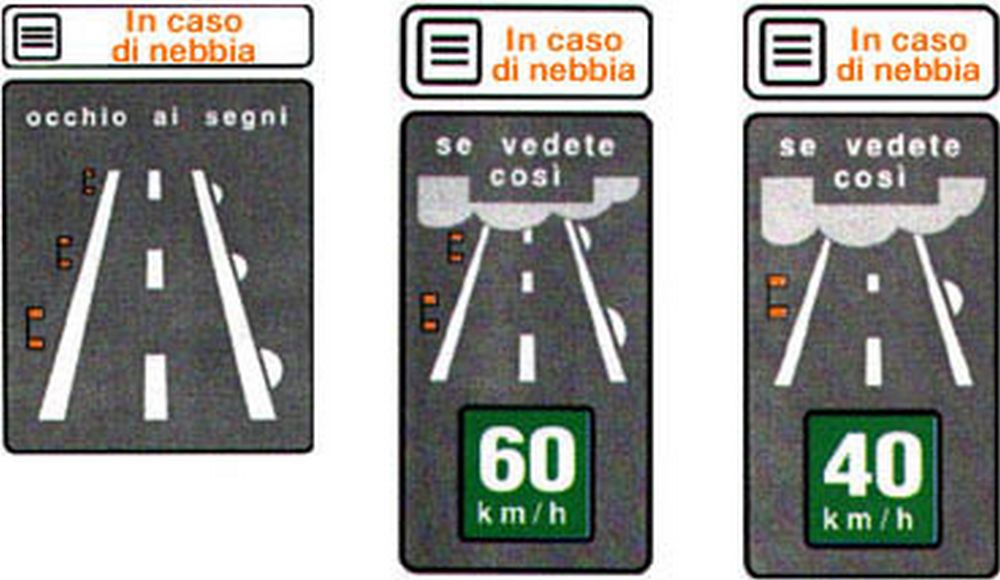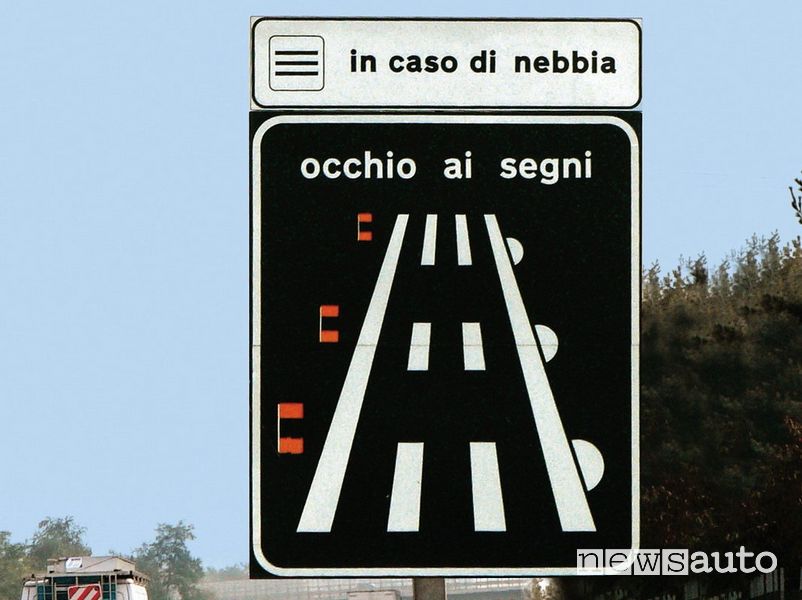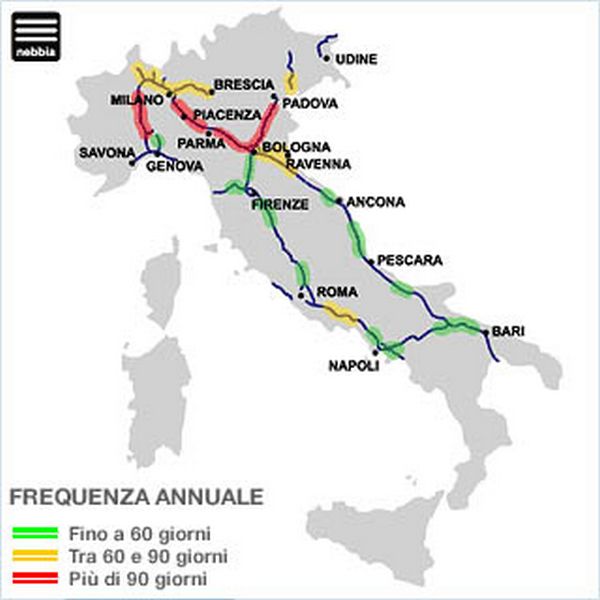Drive with the fog requires a lot of attention due to poor visibility. In case you suddenly find yourself inside a fog bank, here are some advice on how to travel safely to avoid accidents.
Fog is a meteorological phenomenon characterized by the presence of small water droplets suspended in the air, which reduce visibility. The water droplets that form the fog reflect and scatter light, making it difficult to see through the fog. Additionally, fog can create a optic effect which makes distant objects appear more distant blurry and indistinct. This significantly reduces the ability to see surrounding objects clearly, increasing the risk of accidents while driving or other activities requiring good visibility.
How to drive safely in fog
Driving in fog can be dangerous, as reduced visibility increases the risk of accidents roads. Here are some tips on driving in foggy conditions:
- Reduce your speed: Reduce your speed so you can stop quickly if necessary. Driving at a moderate speed increases reaction time and reduces the risk of collisions.
- Keep a safe distance: increases the safety distance compared to other vehicles. Fog reduces visibility, so having more space between you and the vehicle in front is crucial to reacting quickly.
- Avoid sudden slowdowns that can cause rear-end collisions, including chain collisions.
- Avoid spotlights: at night try not to use high beams (high beams as they can create a “light bubble” effect which further reduces visibility).
- Use fog lights, if available: if your vehicle is equipped with fog lights, turn them on, both the front and rear ones. They can improve visibility and be identified by those in front of us.
- If fog lights are not available, it is advisable to adjust the height of the headlights so that they point downwards.
- Windshield and mirrors: keep your windshield clean both inside and out. Adjust your mirrors to maximize visibility. Turn the windshield wipers on intermittently to clear the windshield of water buildup.
- Respect road signs: follow the road signs carefully and respect the signs. Reduce speed further in case of specific indications.
- Stay focused: Concentrate on driving and reduce distractions. Maintain constant attention on the road and other vehicles.
- Stop driving if necessary: If visibility becomes too poor, consider stopping in a safe area and waiting for the fog to clear.
Remember that caution is essential when driving in fog. If conditions become too dangerous, it is best to avoid driving or find a safe place to stop until visibility improves.
Driving in fog, speed and references
When there is poor visibility due to fog, three points must be kept firmly in mind: speed, lights, safe distance and where to look. Only by paying great attention to driving will you be able to greatly reduce the risk of accidents.
The speed
With the fog it is advisable to maintain one speed less than 50 km/h and drive moderately and steadily, especially with visibility below 100 metres. Keep one adequate safety distance is crucial: at 100 km/h, it takes around 85 meters to stop.
The signs can indicate the maximum speed to maintain based on how many reflectors placed on the traffic island are visible on the left side. In poor visibility you can only see one reflector, so the recommended speed is a maximum of 40 km/h. If you see 2 reflectors, the speed can be a maximum of 60 km/h.

On the motorway network, approximately 1,300 kilometers are equipped with signs which indicate the speed to maintain based on visibility, offering a landmark reliable during travel.
Correct use of lights
You also need to know how to use them correctly car lights using headlights anti-fog which spread the light lower and laterally, illuminating the edge of the road better. It is important to have an idea of the visibility and distance at which unlit obstacles might be glimpsed, using methodologies such as counting seconds to estimate distances.
The car's high beam headlights should be used carefully, considering that the fog reflects a light powerfulcreating a sort of “luminous wall” that reduces visibility even further.


Also check the opacity of the front headlights before setting off. If I'm dull or yellowed plan a glass or plastic cleaning operation to regenerate them, eliminating the opaque patina that has formed on the surface with specific products.

Where to look
When driving in fog, especially on the motorway, it is advisable to follow the road carefully signs at the edge of the road rather than the vehicles in front. Furthermore, it is necessary to pay particular attention to signage horizontal and vertical to better orient yourself on the road.

Travel alternatives, change route
If possible, it is advisable to evaluate alternatives of the route, also exiting the motorway if visibility is really limited.
Intervention of the Traffic Police in case of fog
To ensure greater safety, the Police on foggy days it intensifies checks, especially in the areas and times considered most at risk. On motorways, where accidents are frequent, the Polstrada patrol cars activate special procedures:
- Speed not exceeding 50 km/h even with Safety Car;
- the constant use of the blue flashing light, to constitute a point of reference in the fog;
- the use of the variable message panel to remind you of the 50 km/h limit;
- the wide application of available technology and the use of unmarked cars to combat the most risky conduct;
- the careful and punctual detection of weather conditions, to inform users through the CCISS (which can be reached by telephone via the toll-free number 1518) and the media;
- the increase in patrols on stretches of motorway affected by fog.
Where there is most fog in Italy
In Italy, some of the motorway sections most affected by the presence of fog are those that cross the northern plains, such as Po Valley.

This area is particularly prone to fog formation due to weather conditions andhumidity present in the region. Below are the sections of the motorway network most affected by the presence of fog.
Po Valley:
- A1 Milan-Naples, in particular between Milan and Bologna and between Parma and Reggio Emilia.
- A4 Turin-Milan, in particular between Milan and Brescia.
- A5 Turin-Aosta, in particular between Santhià and Aosta.
- A13 Bologna-Padua, in particular between Bologna and Ferrara.
- A21 Turin-Piacenza, in particular between Alessandria and Piacenza.
Po Valley:
- A22 Brennero-Modena, in particular between Verona and Modena.
- A31 Valdastico, in particular between Vicenza and Thiene.
Val d'Aosta:
- A5 Turin-Aosta, in particular between Châtillon and Aosta.
Coastal areas:
- A14 Bologna-Taranto, in particular between Rimini and Ancona.
- A12 Genoa-Livorno, in particular between Genoa and La Spezia.
Other areas:
- A2 Mediterranean Motorway, in particular between Salerno and Reggio Calabria.
- A3 Naples-Salerno, in particular between Naples and Nocera Inferiore.
If you've reached the bottom here you should have understood that driving in fog requires a extreme concentration to avoid mental and visual tiredness, always keeping your eyes on the road.
Read also,
→ Road accidents
→ What to do in case of a road accident
→ Most frequent causes of road accidents
→ BAC limits for driving and sanctions
→ What do you think? Drop by discussions on the FORUM!
#drive #safely #fog
